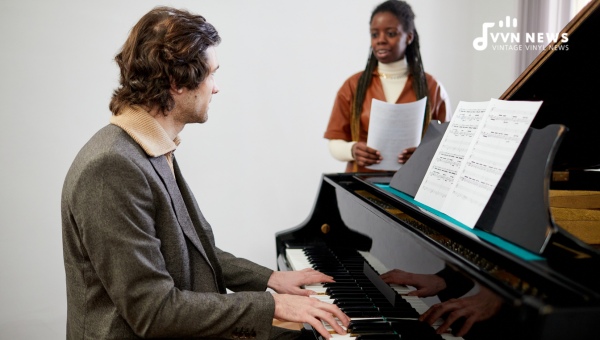Are you a music teacher or a student who is facing the challenge of not enjoying playing a piece? If so, don’t worry, you’re not alone. It’s not uncommon if a Student is not enjoying Playing a Piece.
But what should you do in this situation? How can you overcome the lack of enthusiasm and keep the momentum going?
In this blog post, I will be delving into some practical tips and strategies that can help turn the tide and make your journey with a particular piece more enjoyable and rewarding.
When it comes to playing an instrument or learning music, enjoyment plays a crucial role in keeping motivation levels high. But sometimes, even the most dedicated students can find themselves feeling uninspired or unmotivated by a specific piece.
The first step in addressing this issue is recognizing that it is completely normal to have such feelings; after all, music appreciation is subjective!
The key lies in taking proactive steps to reignite the spark and develop a deeper connection with the piece you’re working on.
What Should You Do If A Student Is Not Enjoying Playing A Piece?
As a music teacher or a student, encountering a piece of music that you’re not enjoying can be frustrating and demotivating.

However, there are several strategies you can employ to overcome this hurdle and make the learning process more enjoyable and rewarding. Let’s explore some practical tips and techniques that can help reignite your passion for playing a challenging piece.
Align with Student’s Interests
One effective strategy to help a student enjoy playing a piece is to align it with their interests. Take the time to understand what kind of music they gravitate towards and what genres, styles, or artists they enjoy listening to.
Once you have this information, search for pieces that fall within their preferred musical realm.
For instance, if a student loves pop music, find arrangements of popular songs that can be adapted to their instrument. By doing this, you are tapping into their passion and making the piece more relatable and enjoyable.
Custom Arrangement
Another way to boost a student’s enjoyment is by arranging the piece specifically for them. If the original version feels too challenging or uninteresting, consider creating a custom arrangement that caters to their skill level and musical preferences.
This might involve simplifying certain sections or adding personalized variations. By tailoring the piece to fit their unique needs, you not only make it more accessible but also give them a sense of ownership over the music.
Also Read: Top 10 Flute Fingering Mistakes: Common Errors & Fixes
Interactive Learning
Engaging in interactive learning activities can make playing a piece more enjoyable for students. Instead of solely focusing on practicing the notes and techniques, incorporate elements of creativity and fun into your lessons.
For example, encourage students to experiment with different dynamics, articulations, or rhythm patterns while playing the piece.
Additionally, try incorporating improvisation exercises in which students can add their own flair or embellishments to the music. This interactive approach fosters creativity and allows students to express themselves through the piece.
Explore Context
Sometimes, understanding the context behind a piece of music can enhance its appeal to students. Take some time during lessons to explore the historical background or composer’s intentions behind the composition.
By gaining insights into the story or emotions embodied in the music, students may develop a deeper appreciation for it. You can discuss interesting anecdotes about how and why the piece was created while encouraging them to interpret and convey those emotions through their playing.
Set Achievable Goals
Setting achievable goals can significantly impact a student’s enthusiasm for a piece. Breaking down the piece into smaller sections or objectives helps students feel a sense of progress and accomplishment as they work through them.
Encourage students to celebrate every milestone they achieve, no matter how small, as this boosts their confidence and motivation.
By setting realistic goals that match the student’s skill level, you create a positive learning environment that keeps them engaged and excited to conquer the piece.
Express Through Improvisation
One powerful way to enhance the enjoyment of playing a piece is through improvisation. Improvisation allows students to express themselves freely and creatively, adding their unique touch to the music.
By encouraging students to improvise sections or add embellishments to the piece, they can develop a sense of ownership and personal style in their playing.
To start, begin by exploring basic improvisation techniques such as experimenting with different rhythms or modifying melodies. Gradually increase complexity as students gain confidence.
Improvising can be done independently or with the guidance of a teacher or mentor who can provide feedback and suggestions.
By incorporating improvisation into practice sessions, students can discover new ways to connect with the piece and reveal their individual musicality.
Also Read: How To Transpose F To C? [Guide For Musicians And Students]
Pair with Enjoyable Pieces
If a particular piece is causing frustration or disinterest, consider pairing it with more enjoyable pieces.
Find songs that resonate with the student’s personal preferences and align them with the current piece they are working on.
This approach provides variety in practice sessions while maintaining progress on challenging pieces.
For example, if a student is struggling with classical composition, you could suggest incorporating a pop song or a familiar tune that they love into their practice routine.
This combination not only adds excitement but also helps maintain motivation as students look forward to playing something they enjoy.
Leverage Technology
In today’s digital age, technology offers various resources that can enhance the learning experience and make practicing more enjoyable.
Consider integrating technology into your music lessons to engage students and make learning interactive.
There are numerous music apps available that provide interactive sheet music, backing tracks, metronome tools, and recording features.
These apps offer a dynamic learning experience where students can engage directly with the music through visual aids and audio samples.
Additionally, online platforms like YouTube provide tutorials from expert musicians who share tips, techniques, and performances that can inspire and motivate students.
Encouraging your students to explore these resources can help them find new ways to approach and enjoy playing a piece.
Adjust Difficulty
Sometimes, not enjoying a piece may stem from it being too challenging for the student’s current skill level. If this is the case, it might be helpful to adjust the difficulty of the piece.
Consider simplifying certain sections or breaking down complex passages into smaller, more manageable parts.
This allows students to build confidence and gradually work their way up to playing the complete piece.
Another approach is to find alternative arrangements of the same piece that cater to different skill levels.
Many composers write simplified versions or variations of popular compositions, providing students with an opportunity to enjoy playing a well-known piece at a level that suits their abilities.
Celebrate Progress
Finally, celebrating progress along the journey is essential for maintaining motivation and enjoyment. Recognize and acknowledge the small victories as students work through a challenging piece.
This can be as simple as praising their effort, highlighting improved technique or musicality, or setting mini-goals and rewarding achievements with incentives like stickers or certificates.
Taking time to reflect on how far they have come and acknowledging their growth not only boosts confidence but also instills a sense of accomplishment and satisfaction in playing the piece.
If you or your student is not enjoying playing a particular piece, remember that it’s normal and can be overcome.
By incorporating improvisation techniques, pairing with enjoyable pieces, leveraging technology, adjusting difficulty, and celebrating progress, you can reignite the spark and find joy in playing even the most challenging compositions.
Also Read: Discover the Most Popular Chord Progressions in Music
FAQs
How can I motivate a student who is not enjoying playing a piece?
To motivate a student who is not enjoying playing a piece, try to align the piece with their interests and goals. Find ways to make the music more relatable and engaging for them through creative arrangements or interactive learning techniques.
Can I modify the piece to make it more enjoyable for the student?
Yes, you can consider creating a custom arrangement of the piece that suits the student’s skill level and musical preferences. This can help make the music feel more personalized and enjoyable for them.
How can I help the student develop a deeper connection with the piece?
Encourage the student to explore the context and background of the piece they are playing. Understanding the history, emotions, and story behind the music can help them develop a deeper appreciation and connection with it.
Should I set specific goals to make learning and playing a piece more enjoyable?
Yes, setting achievable goals is important in keeping students motivated. Break down difficult sections into smaller, manageable tasks, and celebrate their progress along the way. This approach will help keep their enthusiasm high and give them a sense of accomplishment.
Can improvisation be used as a tool to enhance enjoyment while playing a challenging piece?
Absolutely! Encourage your student to experiment with improvisation while playing the challenging piece. This will give them an opportunity to express themselves creatively within the structure of the music and add their unique touch, making it more enjoyable for them.
Conclusion
It is common for students to come across pieces that they don’t enjoy playing. However, with the right approach and strategies in place, it is possible to turn the situation around.
By aligning with the student’s interests, exploring different arrangements, incorporating interactive learning methods, understanding the context of the piece, setting achievable goals, encouraging improvisation, etc students can find ways to connect with and enjoy playing even the most challenging pieces.








